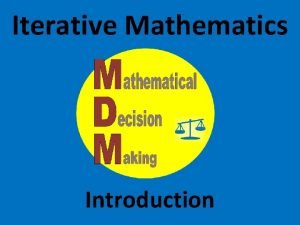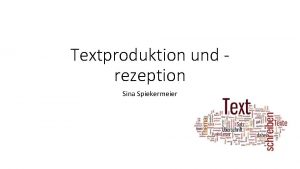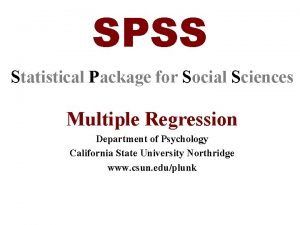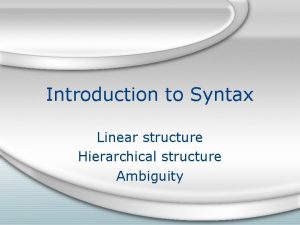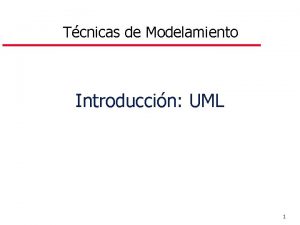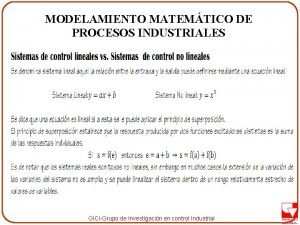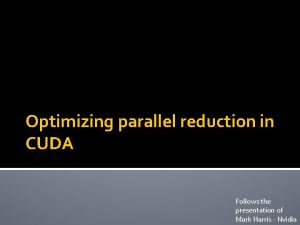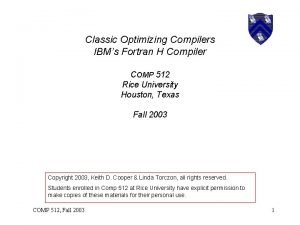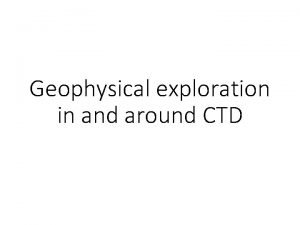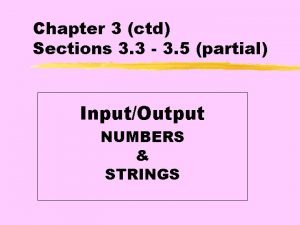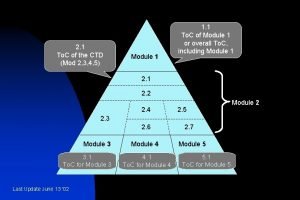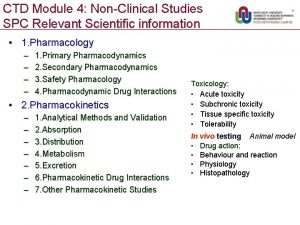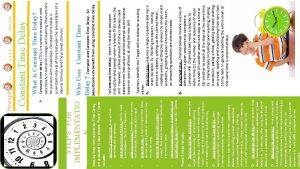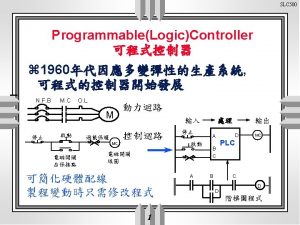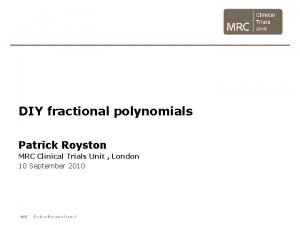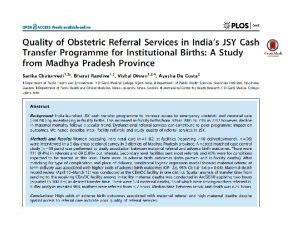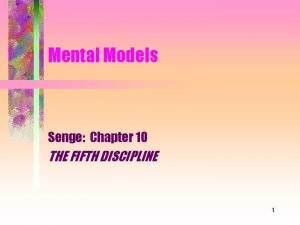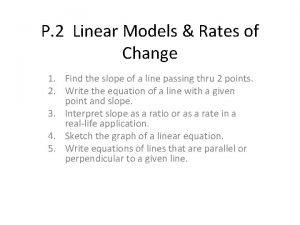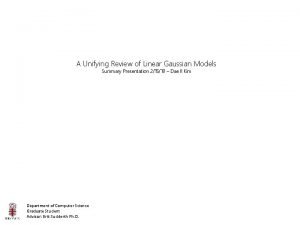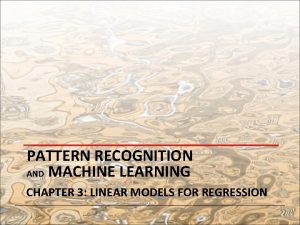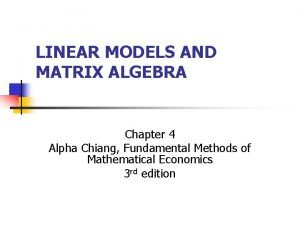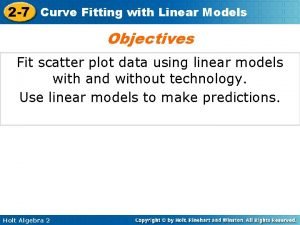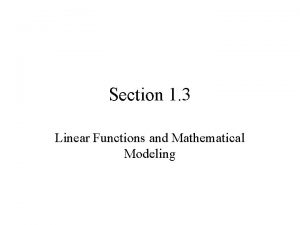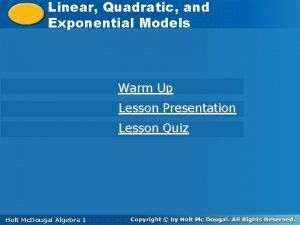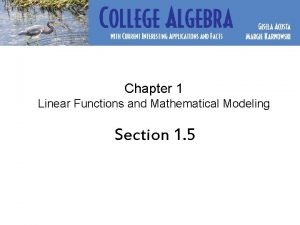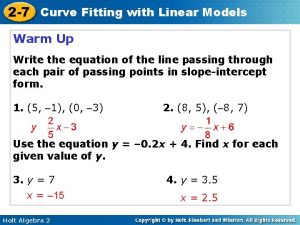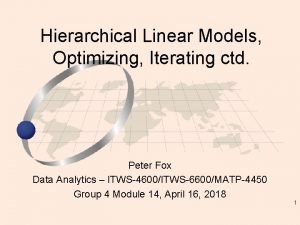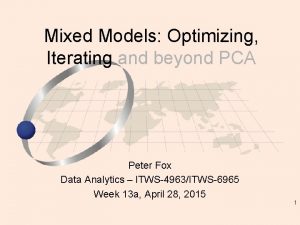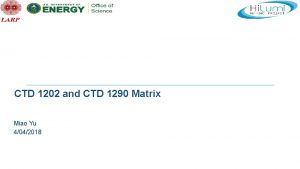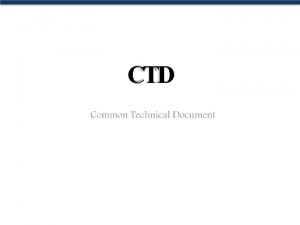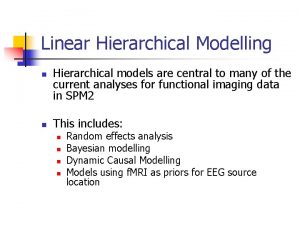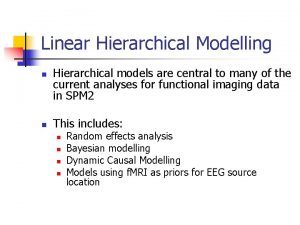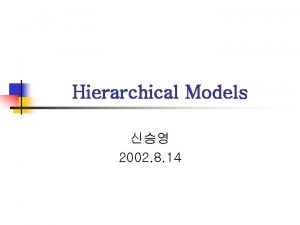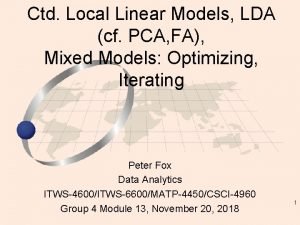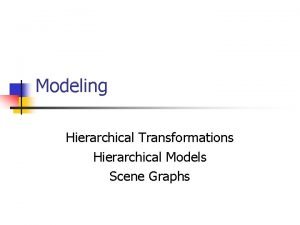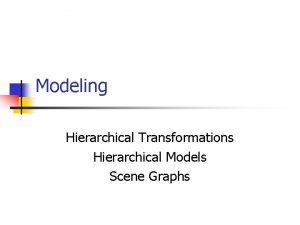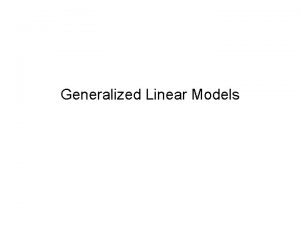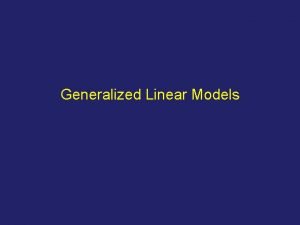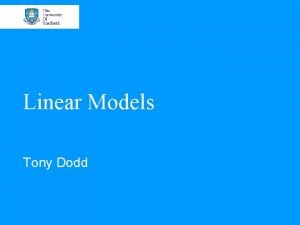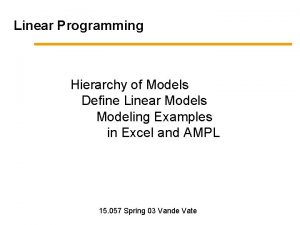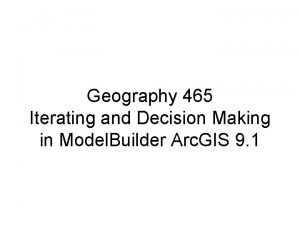Hierarchical Linear Models Optimizing Iterating ctd Peter Fox



![Summary(lmm. 1) Linear mixed model fit by REML ['lmer. Mod'] Formula: extro ~ open Summary(lmm. 1) Linear mixed model fit by REML ['lmer. Mod'] Formula: extro ~ open](https://slidetodoc.com/presentation_image_h/e64ae67828569fa3cd3574d416d22ed5/image-4.jpg)


![summary Linear mixed model fit by REML ['lmer. Mod'] Formula: extro ~ 1 + summary Linear mixed model fit by REML ['lmer. Mod'] Formula: extro ~ 1 +](https://slidetodoc.com/presentation_image_h/e64ae67828569fa3cd3574d416d22ed5/image-7.jpg)






![re. sim[[1]] # For ”class: school" random effect. , , (Intercept) a: III a: re. sim[[1]] # For ”class: school" random effect. , , (Intercept) a: III a:](https://slidetodoc.com/presentation_image_h/e64ae67828569fa3cd3574d416d22ed5/image-14.jpg)
![re. sim[[2]] # For "school" random effect. , , (Intercept) I II IV V re. sim[[2]] # For "school" random effect. , , (Intercept) I II IV V](https://slidetodoc.com/presentation_image_h/e64ae67828569fa3cd3574d416d22ed5/image-15.jpg)




































- Slides: 51

Hierarchical Linear Models, Optimizing, Iterating ctd. Peter Fox and Greg Hughes Data Analytics – ITWS-4600/ITWS-6600 Group 4 Module 14, April 17, 2017 1

Iterating: structure to regression • Hierarchical … simpler form of mixed model? 2

Remember: Random effects. . In the initial exploiration class as nested within school, “class is 'under' school”, specified inside parentheses and can be repeated measures, interaction terms, or nested lmm. 1 <- lmer(extro ~ open + social + class + (1|school/class), data = lmm. data) summary(lmm. 1) 3
![Summarylmm 1 Linear mixed model fit by REML lmer Mod Formula extro open Summary(lmm. 1) Linear mixed model fit by REML ['lmer. Mod'] Formula: extro ~ open](https://slidetodoc.com/presentation_image_h/e64ae67828569fa3cd3574d416d22ed5/image-4.jpg)
Summary(lmm. 1) Linear mixed model fit by REML ['lmer. Mod'] Formula: extro ~ open + social + class + (1 | school/class) Data: lmm. data REML criterion at convergence: 3521. 5 Scaled residuals: Min 1 Q Median 3 Q Max -10. 0144 -0. 3373 0. 0164 0. 3378 10. 5788 Random effects: Groups Name Variance Std. Dev. class: school (Intercept) 2. 8822 1. 6977 school (Intercept) 95. 1725 9. 7556 Residual 0. 9691 0. 9844 Number of obs: 1200, groups: class: school, 24; school, 6 4

Fixed effects: Estimate Std. Error t value (Intercept) 5. 712 e+01 4. 052 e+00 14. 098 open 6. 053 e-03 4. 965 e-03 1. 219 social 5. 085 e-04 1. 853 e-03 0. 274 classb 2. 047 e+00 9. 835 e-01 2. 082 classc 3. 698 e+00 9. 835 e-01 3. 760 classd 5. 656 e+00 9. 835 e-01 5. 751 Correlation of Fixed Effects: (Intr) open social classb classc open -0. 049 social -0. 046 -0. 006 classb -0. 121 -0. 002 0. 005 classc -0. 121 -0. 001 0. 000 0. 500 classd -0. 121 0. 000 0. 002 0. 500 5

Now: Intra Class Correlation # First, run the 'null' model (which includes just the intercepts and the random effect for the highest level of the nesting variables; in this example 'school’. lmm. null <- lmer(extro ~ 1 + (1|school), data = lmm. data) summary(lmm. null) 6
![summary Linear mixed model fit by REML lmer Mod Formula extro 1 summary Linear mixed model fit by REML ['lmer. Mod'] Formula: extro ~ 1 +](https://slidetodoc.com/presentation_image_h/e64ae67828569fa3cd3574d416d22ed5/image-7.jpg)
summary Linear mixed model fit by REML ['lmer. Mod'] Formula: extro ~ 1 + (1 | school) Data: lmm. data REML criterion at convergence: 5806. 1 Scaled residuals: Min 1 Q Median 3 Q Max -5. 9773 -0. 5315 0. 0059 0. 5298 6. 2109 Random effects: Groups Name Variance Std. Dev. school (Intercept) 95. 87 9. 791 Residual 7. 14 2. 672 Number of obs: 1200, groups: school, 6 Fixed effects: Estimate Std. Error t value (Intercept) 60. 267 3. 998 15. 07 7

Intra Class Correlation (ICC) # Notice the variance component estimates for the random effect. If we add these together, then divide that total by the 'school' variance estimate; we get the ICC 95. 8720 + 7. 1399 95. 8720 / 103. 0119 # This indicates that 93. 06886% of the variance in 'extro' can be "explained" by school group membership (verified below using Bliese's multilevel package). 8

# ICC 1 and ICC 2 as described by Bliese. library(multilevel) aov. 1 <- aov(extro ~ school, lmm. data) summary(aov. 1) Df Sum Sq Mean Sq F value Pr(>F) school 5 95908 19182 2687 <2 e-16 *** Residuals 1194 8525 7 --Signif. codes: 0 ‘***’ 0. 001 ‘**’ 0. 01 ‘*’ 0. 05 ‘. ’ 0. 1 ‘ ’ 1 9

ICC 1/ ICC 2 (Bliese) # Below (ICC 1) indicates that 93. 07% of the variance in 'extro' can be "explained" by school # group membership. ICC 1(aov. 1) [1] 0. 930689 # The ICC 2 value (below) of. 9996 indicates that school groups can be very reliably differentiated in terms of 'extro' scores. > ICC 2(aov. 1) [1] 0. 9996278 10

Simulating the Posterior Distribution of Predicted Values. # 'arm' package and use the 'sim' function. Note: n = 100 is the default for 'sim’. library(arm) sim. 100 <- sim(lmm. 2, n = 100) # Show the structure of objects in the 'sim' object. str(sim. 100) <not displayed> 11

Simulating the Posterior Distribution of Predicted Values. # Fixed effect parameter estimates resulting from the 'sim' function applied to the fitted model (lmm. 3). fe. sim <- fixef(sim. 100) fe. sim (Intercept) open agree social classb classc classd [1, ] 55. 24643 0. 0113879890 -7. 370662 e-03 4. 115703 e-03 1. 99092257 2. 9418821 3. 162604 [2, ] 56. 69630 0. 0051451242 -1. 373704 e-02 -1. 799054 e-03 1. 73041539 3. 8671053 6. 160748 [3, ] 63. 18570 0. 0003935109 2. 607783 e-03 1. 435752 e-03 1. 80586410 3. 2203590 5. 802364 [4, ] 56. 00007 0. 0042571840 -6. 076147 e-03 -5. 324692 e-03 2. 71728164 5. 6066533 6. 852651 [5, ] 59. 94718 0. 0026340937 -2. 584516 e-03 3. 295548 e-07 1. 45650055 3. 3174045 5. 871667 [6, ] 65. 26589 0. 0100470520 -1. 324052 e-02 -3. 480780 e-04 1. 79030239 3. 3253023 4. 050358 [7, ] 56. 80116 0. 0082074105 -8. 175804 e-03 1. 182413 e-03 2. 35693946 3. 0119753 5. 937348 [8, ] 61. 32350 0. 0047934705 -1. 484498 e-02 -2. 710392 e-03 2. 11558934 4. 2048688 6. 552194 [9, ] 53. 87001 0. 0054213155 -7. 160089 e-03 8. 668833 e-04 1. 86080451 2. 8613245 4. 761669 [10, ] 57. 47641 0. 0055136083 -6. 293459 e-03 -5. 253847 e-05 3. 17600677 6. 4525022 6. 438270 12

Simulating the Posterior Distribution of Predicted Values. # Random effect parameter estimates resulting from the 'sim' function applied to the fitted model (lmm. 3). re. sim <- ranef(sim. 100) re. sim[[1]] # For "class: school" random effect. re. sim[[2]] # For ”school" random effect. 13
![re sim1 For class school random effect Intercept a III a re. sim[[1]] # For ”class: school" random effect. , , (Intercept) a: III a:](https://slidetodoc.com/presentation_image_h/e64ae67828569fa3cd3574d416d22ed5/image-14.jpg)
re. sim[[1]] # For ”class: school" random effect. , , (Intercept) a: III a: IV a: VI b: II [1, ] -1. 8138575 1. 009722294 0. 502308352 0. 574242632 1. 62249792 0. 34486828 0. 41734749 -0. 516721008 [2, ] -4. 5023927 0. 325461572 1. 105711427 0. 555938715 1. 49927806 -1. 05082790 0. 72720272 1. 065476210 [3, ] -2. 9011592 1. 699112086 1. 924096930 1. 588047483 0. 08551292 -1. 71333314 0. 47475579 0. 095562455 [4, ] -4. 7454517 -1. 024665550 0. 449287566 1. 066899463 1. 56470696 -1. 34450134 -0. 47980863 0. 964331898 [5, ] -4. 6413961 0. 092845610 0. 878011579 0. 328065852 0. 94227622 -2. 48685750 0. 13250051 0. 336973705 Much more! 14
![re sim2 For school random effect Intercept I II IV V re. sim[[2]] # For "school" random effect. , , (Intercept) I II IV V](https://slidetodoc.com/presentation_image_h/e64ae67828569fa3cd3574d416d22ed5/image-15.jpg)
re. sim[[2]] # For "school" random effect. , , (Intercept) I II IV V VI [1, ] -10. 889610 11. 9319979 6. 4468727 7. 52046579 9. 407021912 14. 8484638 [2, ] -11. 811196 -10. 1548630 -2. 3812528 4. 24907315 6. 038850618 15. 1022442 [3, ] -17. 642004 -6. 5881409 2. 6734584 5. 09687885 7. 313420709 7. 6798984 [4, ] -12. 201235 -6. 5415744 -6. 2550322 4. 62112286 13. 050521302 14. 7147714 [5, ] -16. 604904 -10. 9215257 -3. 2698478 2. 47299902 2. 276550540 11. 8441601 15

Get predicted values # To get predicted values from the posterior distribution, use the 'fitted' function. yhat. lmm. 2 <- fitted(sim. 100, lmm. 2) head(yhat. lmm. 2) < see output > tail(yhat. lmm. 2) < see output > 16

# The above object (yhat. lmm. 2) is a matrix of 100 (simulations) by 1200 participants. # In this matrix, each row represents a participant and each column represents a simulated predicted value for the outcome variable of our lmm. 2 model. # Therefore, the yhat. lmm. 2 object can be used to create credible intervals for each participant (i. e. individual level). > quantile(yhat. lmm. 2, probs = c(. 025, . 985)) # For first participant (i. e. row 1). 2. 5% 98. 5% 39. 93096 81. 29584 17

# We can also create a data frame with the quantiles for every participant. quant. mat <- data. frame(matrix(rep(NA, 1200*2), ncol = 2)) names(quant. mat) <- c("2. 5%", "98. 5%") quant. mat[, 1] <- apply(yhat. lmm. 2, 1, quantile, probs =. 025) quant. mat[, 2] <- apply(yhat. lmm. 2, 1, quantile, probs =. 985) head(quant. mat, 25) 18

Head of data frame 2. 5% 98. 5% 1 47. 99122 80. 07736 2 66. 11761 72. 79333 3 76. 65614 83. 60897 4 46. 50965 79. 56451 5 48. 01904 80. 07742 6 47. 20663 54. 45487 7 49. 31807 75. 21708 8 48. 06083 80. 11512 19

In R - lcmm • Estimation of latent class mixed-effect models for different types of outcomes (continuous Gaussian, continuous non-Gaussian or ordinal) • This function fits mixed models and latent class mixed models for different types of outcomes. – continuous longitudinal outcomes (Gaussian or non-Gaussian) as well as bounded quantitative, discrete and ordinal longitudinal outcomes. 20

What does it do? • The different types of outcomes are taken into account using parameterized nonlinear link functions between the observed outcome and the underlying latent process of interest • At the latent process level, the model estimates a standard linear mixed model or a latent class mixed model when heterogeneity in the population is investigated (in the same way as in function hlme -> next) but it should be noted that the program also works when 21 no random-effect is included!

What does it do? • Parameters of the nonlinear link function and of the latent process mixed model are estimated simultaneously using a maximum likelihood method. lcmm(fixed, mixture, random, subject, classmb, ng = 1, idiag = FALSE, nwg = FALSE, link = "linear", intnodes = NULL, eps. Y = 0. 5, data, B, conv. B = 1 e-04, conv. L = 1 e-04, conv. G = 1 e-04, maxiter=100, nsim=100, prior, range=NULL, na. action=1) ### that’s a lot of parameters 22

Turning to lcmm # Beta link function m 11<-lcmm(Ydep 2~Time+I(Time^2), random=~Time, subject='ID', ng=1, data=data_Jointlcmm, link="beta") summary(m 11) plot. linkfunction(m 11, bty="l") # I-splines with 3 equidistant nodes m 12<-lcmm(Ydep 2~Time+I(Time^2), random=~Time, subject='ID', ng=1, data=data_Jointlcmm, link="3 -equi-splines") summary(m 12) # I-splines with 5 nodes at quantiles m 13<-lcmm(Ydep 2~Time+I(Time^2), random=~Time, subject='ID', ng=1, data=data_Jointlcmm, link="5 -quant-splines") summary(m 13) # I-splines with 5 nodes, and interior nodes entered manually m 14<-lcmm(Ydep 2~Time+I(Time^2), random=~Time, subject='ID', ng=1, data=data_Jointlcmm, link="5 -manual-splines", intnodes=c(10, 25)) summary(m 14) plot. linkfunction(m 14, bty="l") 23

Turning to lcmm # Thresholds # Especially for the threshold link function, we recommend to estimate models # with increasing complexity and use estimates of previous ones to specify # plausible initial values (we remind that estimation of models with threshold # link function involves a computationally demanding numerical integration # -here of size 3) m 15<-lcmm(Ydep 2~Time+I(Time^2), random=~Time, subject='ID', ng=1 , data=data_Jointlcmm, link="thresholds", maxiter=100, B=c(-0. 8379, -0. 1103, 0. 3832, 0. 3788 , 0. 4524, -7. 3180, 0. 5917, 0. 7364, 0. 6530, 0. 4038, 0. 4290, 0. 6099, 0. 6014 , 0. 5354 , 0. 5029 , 0. 5463, 0. 5310 , 0. 5352, 0. 6498, 0. 6653, 0. 5851, 0. 6525, 0. 6701 , 0. 6670 , 0. 6767 , 0. 7394 , 0. 7426, 0. 7153, 0. 7702, 0. 6421)) summary(m 15) plot. linkfunction(m 15, bty="l") 24

Turning to lcmm #### Plot of estimated different link functions: #### (applicable for models that only differ in the "link function" used. #### Otherwise, the latent process scale is different and a rescaling is necessary) transfo <- data. frame(marker=m 10$estimlink[, 1], linear=m 10$estimlink[, 2], beta=m 11$estimlink[, 2], spl_3 e=m 12$estimlink[, 2], spl_5 q=m 13$estimlink[, 2], spl_5 m=m 14$estimlink[, 2]) dev. new() plot(transfo[, 1]~transfo[, 2], xlim=c(-10, 5), col=1, type='l', xlab="latent process", ylab="marker", bty="l") par(new=TRUE) plot(transfo[, 1]~transfo[, 3], xlim=c(-10, 5), col=2, type='l', xlab="", ylab="", bty="l") par(new=TRUE) plot(transfo[, 1]~transfo[, 4], xlim=c(-10, 5), col=3, type='l', xlab="", ylab="", bty="l") par(new=TRUE) plot(transfo[, 1]~transfo[, 5], xlim=c(-10, 5), col=4, type='l', xlab="", ylab="", bty="l") par(new=TRUE) plot(m 15$estimlink[, 1]~m 15$estimlink[, 2], xlim=c(-10, 5), col=5, type='l' , xlab="", ylab="", bty="l") legend(x="bottomright", legend=c(colnames(transfo[, 2: 5]), "thresholds"), col=1: 5, lty=1, inset=. 02, bty="n”) 25

Turning to lcmm #### Estimation of 2 -latent class mixed models with different assumed link #### functions with individual and class specific linear trend #### for illustration, only default initial values where used but other #### sets of initial values should also be tried to ensure convergence #### towards the golbal maximum # Linear link function m 20<-lcmm(Ydep 2~Time, random=~Time, subject='ID', mixture=~Time, ng=2, idiag=TRUE, data=data_Jointlcmm, link="linear") summary(m 20) postprob(m 20) # Beta link function m 21<-lcmm(Ydep 2~Time, random=~Time, subject='ID', mixture=~Time, ng=2, idiag=TRUE, data=data_Jointlcmm, link="beta") summary(m 21) postprob(m 21) # I-splines link function (and 5 nodes at quantiles) m 22<-lcmm(Ydep 2~Time, random=~Time, subject='ID', mixture=~Time, ng=2, idiag=TRUE, data=data_Jointlcmm, link="5 -quant-splines") summary(m 22) postprob(m 22) 26 data <- data_Jointlcmm[data_Jointlcmm$ID==193, ] plot. predict(m 22, var. time="Time", newdata=data, bty="l")

Turning to multlcmm library(lcmm) data(data_Jointlcmm) # linear link function # Latent process mixed model for two curvilinear outcomes. Link functions are aproximated by I-splines, the first one has 3 nodes (i. e. 1 internal node 8), the second one has 4 nodes (i. e. 2 internal nodes 12, 25) m 1 <multlcmm(Ydep 1+Ydep 2~1+Time*X 2+contrast(X 2), random=~1+Time, subject="ID", random. Y=TRUE, link=c("4 -manual-splines", "3 -manual -splines"), intnodes=c(8, 12, 25), data=data_Jointlcmm) Be patient, multlcmm is running. . . The program took 56. 14 seconds 27

Quicker lcmm # to reduce the computation time, the same model is estimated using # a vector of initial values m 1 <multlcmm(Ydep 1+Ydep 2~1+Time*X 2+contrast(X 2), random=~1+Time, subject="ID", random. Y=TRUE, link=c("4 -manual-splines", "3 -manual -splines"), intnodes=c(8, 12, 25), data=data_Jointlcmm, B=c(-1. 071, -0. 192, 0. 106, -0. 005, -0. 193, 1. 012, 0. 870, 0. 881, 0. 000, -7. 520, 1. 401, 1. 607 , 1. 908, 1. 431, 1. 082, -7. 528, 1. 135 , 1. 454 , 2. 328, 1. 052)) Be patient, multlcmm is running. . . The program took 7. 78 seconds 28

Summary(m 1) General latent class mixed model fitted by maximum likelihood method multlcmm(fixed = Ydep 1 + Ydep 2 ~ 1 + Time * X 2 + contrast(X 2), random = ~1 + Time, subject = "ID", random. Y = TRUE, link = c("4 -manual -splines", "3 -manual-splines"), intnodes = c(8, 12, 25), data = data_Jointlcmm) Statistical Model: Dataset: data_Jointlcmm Number of subjects: 300 Number of observations: 3356 Number of latent classes: 1 Number of parameters: 21 Link functions: Quadratic I-splines with nodes 0 8 12 17. 581 for Ydep 1 Quadratic I-splines with nodes 0 25 30 for Ydep 2 29

Summary(m 1) Iteration process: Convergence criteria satisfied Number of iterations: 4 Convergence criteria: parameters= 5. 2 e-11 : likelihood= 2. 1 e-08 : second derivatives= 1. 2 e-09 Goodness-of-fit statistics: maximum log-likelihood: -6977. 48 AIC: 13996. 95 BIC: 14074. 73 30

Summary(m 1) Maximum Likelihood Estimates: Fixed effects in the longitudinal model: coef Se Wald p-value intercept (not estimated) 0. 00000 Time -1. 07056 0. 12293 -8. 70900 0. 00000 X 2 -0. 19225 0. 16697 -1. 15100 0. 24957 Time: X 2 0. 10627 0. 18634 0. 57000 0. 56847 Contrasts on X 2 (p=0. 88696) Ydep 1 -0. 00483 0. 03399 -0. 14215 0. 88696 Ydep 2* 0. 00483 0. 03399 0. 14215 0. 88696 *coefficient not estimated but obtained from the others as minus the sum of them Variance-covariance matrix of the random-effects: (the variance of the first random effect is not estimated) intercept Time intercept 1. 00000 Time -0. 19338 1. 01251 31

Summary(m 1) – last bit! Ydep 1 Ydep 2 Residual standard error: 0. 86955 0. 88053 Standard error of the random effect: 0. 00000 Parameters of the link functions: coef Se Wald p-value Ydep 1 -I-splines 1 -7. 51985 0. 64412 -11. 675 0 e+00 Ydep 1 -I-splines 2 1. 40067 0. 18058 7. 756 0 e+00 Ydep 1 -I-splines 3 1. 60739 0. 10324 15. 569 0 e+00 Ydep 1 -I-splines 4 1. 90822 0. 07873 24. 238 0 e+00 Ydep 1 -I-splines 5 1. 43117 0. 09075 15. 770 0 e+00 Ydep 1 -I-splines 6 1. 08205 0. 21198 5. 105 0 e+00 Ydep 2 -I-splines 1 -7. 52861 0. 67080 -11. 223 0 e+00 Ydep 2 -I-splines 2 1. 13505 0. 25553 4. 442 1 e-05 Ydep 2 -I-splines 3 1. 45345 0. 14629 9. 935 0 e+00 Ydep 2 -I-splines 4 2. 32793 0. 08636 26. 956 0 e+00 Ydep 2 -I-splines 5 1. 05187 0. 05908 17. 803 0 e+00 32

plot(m 1, which="linkfunction") # variation percentages explained by linear mixed regression > Var. Expl(m 1, data. frame(Time=0)) class 1 %Var-Ydep 1 56. 94364 %Var-Ydep 2 56. 32753 33

summary(m 2) <…> # posterior classification postprob(m 2) Posterior classification: class 1 class 2 N 143. 00 157. 00 % 47. 67 52. 33 Posterior classification table: --> mean of posterior probabilities in each class prob 1 prob 2 class 1 1. 0000 0. 0000 class 2 0. 0589 0. 9411 Posterior probalities above a threshold (%): class 1 class 2 prob>0. 7 100 98. 09 Prob>0. 8 100 96. 18 prob>0. 9 100 85. 99 34

# longitudinal predictions in the outcomes scales for a given profile of covariates newdata <data. frame(Time=seq(0, 5, length=100), X 1=rep(0, 100), X 2=rep(0, 100), X 3=rep(0, 100)) pred. GH <predict. Y(m 2, newdata, var. time="Time", meth. Integ=0, ns im=20) head(pred. GH) Etc. 35

In lcmm - hlme • Fits a latent class linear mixed model (LCLMM) also known as growth mixture model or heterogeneous linear mixed model. • LCLMM consists in assuming that the population is divided in a finite number of latent classes; each latent class is characterized by a specific mean trajectory which is described by a class-specific linear mixed model. • Both the latent class membership and the trajectory can be explained according to covariates. • This model is limited to a Gaussian outcome. 36

In R hlme(fixed, mixture, random, subject, classmb, ng = 1, idiag = FALSE, nwg = FALSE, cor=NULL, data, B, conv. B=0. 0001, conv. L=0. 0001, conv. G=0. 0001, prior, maxiter=500, subset=NULL, na. action=1) 37

Example data(data_hlme) m 1<-hlme(Y~Time*X 1, random=~Time, subject='ID', ng=1, idiag=TRUE, data=data_hlme) summary(m 1) 38

Summary hlme Heterogenous linear mixed model fitted by maximum likelihood method hlme(fixed = Y ~ Time * X 1, random = ~Time, subject = "ID", ng = 1, idiag = TRUE, data = data_hlme) Statistical Model: Dataset: data_hlme Number of subjects: 100 Number of observations: 326 Number of latent classes: 1 Number of parameters: 7 39

Summary hlme Iteration process: Convergence criteria satisfied Number of iterations: 9 Convergence criteria: parameters= 1. 2 e-07 : likelihood= 1. 6 e-05 : second derivatives= 6. 2 e-13 Goodness-of-fit statistics: maximum log-likelihood: -804. 98 AIC: 1623. 95 BIC: 1642. 19 Maximum Likelihood Estimates: Fixed effects in the longitudinal model: coef Se Wald p-value intercept 25. 86515 0. 79448 32. 556 0. 00000 Time -0. 33282 0. 17547 -1. 897 0. 05787 X 1 1. 69698 1. 03466 1. 640 0. 10098 Time: X 1 -0. 39364 0. 22848 -1. 723 0. 08491 40

Summary hlme Variance-covariance matrix of the random-effects: intercept Time intercept 24. 63032 Time 0. 00000 1. 168762 coef se Residual standard error: 0. 9501876 0. 05765784 41

plot(m 1) 42

Example m 2<-hlme(Y~Time*X 1, mixture=~Time, random=~Time, classmb=~X 2+X 3, subject='ID', ng=2, data=data_hlme, B=c(0. 11, -0. 74, -0. 07, 20. 71, 29. 39, -1, 0. 13, 2. 45, -0. 29, 4. 5, 0. 36, 0. 79, 0. 97)) Iteration process: m 2 Convergence criteria satisfied Number of iterations: 2 Convergence criteria: parameters= 1. 3 e-07 : likelihood= 4. 4 e-07 hlme(fixed = Y ~ Time * X 1, mixture = ~Time, random = ~Time, : second derivatives= 2. 5 e-12 Heterogenous linear mixed model fitted by maximum likelihood method subject = "ID", classmb = ~X 2 + X 3, ng = 2, data = data_hlme) Statistical Model: Dataset: data_hlme Number of subjects: 100 Number of observations: 326 Number of latent classes: 2 Number of parameters: 13 Goodness-of-fit statistics: maximum log-likelihood: -773. 82 AIC: 1573. 64 BIC: 1607. 51 43

Example summary(m 2) postprob(m 2) Posterior classification: class 1 class 2 N 46 54 % 46 54 Posterior classification table: --> mean of posterior probabilities in each class prob 1 prob 2 class 1 0. 9588 0. 0412 class 2 0. 0325 0. 9675 Posterior probalities above a threshold (%): class 1 class 2 prob>0. 7 93. 48 100. 00 prob>0. 8 93. 48 92. 59 prob>0. 9 86. 96 83. 33 44

45

Example ### same model as m 2 but initial values specified m 3<-hlme(Y~Time*X 1, mixture=~Time, random=~Time, classmb=~X 2+X 3, subject='ID', ng=2, data=data_hlme, B=c(0, 0, 0, 30, 25, 0, -1, 0, 0, 5, 0, 1, 1)) m 3 46

Predicting… summary(m 3) Etc. ## plot of predicted trajectories using some newdata<-data. frame( Time= seq(0, 5, length=100), X 1= rep(0, 100), X 2=rep(0, 100), X 3=rep(0, 100)) plot. predict(m 3, newdata, "Time", "right", bty="l") 47

plot m 3 48

Beyond PCA! • Kernel PCA • ICA – PCA is not particularly helpful for finding independent clusters – ICA idea: – Assume non-Gaussian data – Find multiple sets of components – Minimize correlation between components – Blind source separation example: – Given: Audio recording with w/2 overlapping voices – Goal: Separate voices into separate tracks 49

Beyond PCA! Probabilistic PCA Bayesian source separation Continuous Latent Variables 50

Reading, etc. • http: //data-informed. com/focus-predictiveanalytics/ • Final weeks – final project presentations – Monday, Thursday, Monday – we cannot run over the class time to complete these – plan accordingly, arrive on time (instructions and initial schedule sent in LMS) – and attendance is very important • 4 MINUTES – you do not need more 51
 What is iteration in mathematics
What is iteration in mathematics Rpi data science
Rpi data science Peter fox schwarz zu blau text
Peter fox schwarz zu blau text Hierarchical linear regression spss
Hierarchical linear regression spss Linear sentence structure
Linear sentence structure I
I Diagrama p&i
Diagrama p&i How is economizing different from optimizing?
How is economizing different from optimizing? Parallel reduction cuda
Parallel reduction cuda Cuda reduction
Cuda reduction The fortran optimizing compiler
The fortran optimizing compiler Dr moza
Dr moza Ctd structure
Ctd structure Ctd
Ctd Ctd module 2 table of contents
Ctd module 2 table of contents Ctd format
Ctd format Ctd
Ctd Ctd sections
Ctd sections Ctd modules
Ctd modules Ctd modules
Ctd modules Module 3 ctd table contents
Module 3 ctd table contents Module 4 ctd
Module 4 ctd Ctd modules
Ctd modules Constant time delay
Constant time delay Prophet ctd
Prophet ctd Map plc/slc messages
Map plc/slc messages Ctd royston
Ctd royston Civ 6 ctd
Civ 6 ctd Ctd automatizadas
Ctd automatizadas What is the difference between models & semi modals?
What is the difference between models & semi modals? Mental models senge
Mental models senge Is communication a linear process
Is communication a linear process Hunkins model
Hunkins model Linear models and rates of change
Linear models and rates of change Linear model of communication
Linear model of communication A unifying review of linear gaussian models
A unifying review of linear gaussian models Linear basis function models
Linear basis function models Matrix multiplication linear algebra
Matrix multiplication linear algebra Flair furniture company linear programming
Flair furniture company linear programming Curve fitting with linear models
Curve fitting with linear models Linear functions as mathematical models
Linear functions as mathematical models Linear quadratic and exponential models
Linear quadratic and exponential models Linear functions as mathematical models
Linear functions as mathematical models Curve fitting with linear models
Curve fitting with linear models Simple multiple linear regression
Simple multiple linear regression Contoh soal biseksi
Contoh soal biseksi Types of non linear text
Types of non linear text Linear vs nonlinear storytelling
Linear vs nonlinear storytelling Contoh soal metode iterasi titik tetap
Contoh soal metode iterasi titik tetap Linear pipeline processor
Linear pipeline processor Multimedia definition
Multimedia definition Left linear to right linear grammar
Left linear to right linear grammar
